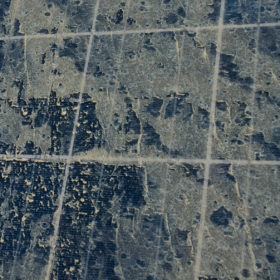Benban developers agree to pay an extra $102m for building materials
Half of the EGP1.6 billion charge will be paid up front with the balance staggered over five years, pv magazine has learned.
New panel cleaning tech based on nano-coating and mechanical vibration
Researchers in Egypt have tested a new solar module cleaning technique for solar arrays in arid regions. They claim that the combination of nano-coatings with vibration mechanisms on the backs of modules can reduce manual cleaning requirements.
World could add more than 900 GW of solar by 2025 if politicians grasp the nettle – IEA
With the International Energy Agency publishing its latest five-year clean energy forecast today, pv magazine takes a look at the solar content of the 162-page document.
Solar challenges and trends and Covid-19 discussed at 2020 Africa Energy Forum
The 24-day, digital 2020 Africa Energy Forum kicked off on October 20. The event brings together African energy sector officials to identify opportunities, air their views, form partnerships, and take the necessary steps to improve the industry. For solar, challenges in policy making, procurement processes and the effects of the Covid-19 pandemic were discussed, as well as emerging trends such as solar digitalization.
Benban developers on brink of settling reported $102m cost-sharing deal
Sources connected to developers at the site confirm the figure has been agreed with the Egyptian Electricity Transmission Company but said it was still subject to change. The utility is seeking raised contributions from renewables companies to cover what it says were rises in building material costs.
IRENA presents $2tn plan to drive 5.5m renewables jobs by 2023
Doubling down on renewable energy investment and energy transition spending is required to ensure a truly green global recovery from the Covid-19 crisis and its economic aftershock, claims the International Renewable Energy Agency.
Egypt to impose ‘merger fee’ on net-metered solar
Law firm Riad & Riad has confirmed the levy will be applied but said the level of the charge had not been determined, despite a report to the contrary in one local newspaper.
Cooling PV panels with seawater
An Anglo-Egyptian research group has developed a passive cooling method based on saturated activated alumina, with saline water as a cooling agent.
EBRD may finance ACWA’s 200 MW solar plant in Egypt with $54 million loan
The $155,4 million project was secured by the Saudi energy giant through a tender held in 2019. The facility will sell power at a price of $0.02752/kWh.
Testing CPM-based passive cooling for CPV systems
An international research team has tested change material heat sinks for heat management on a concentrator photovoltaic system. It found that increasing over height ratios lowers the formation of stratified liquid layers, which in turn reduces the potential hot spots in the upper part of the solar cell.










